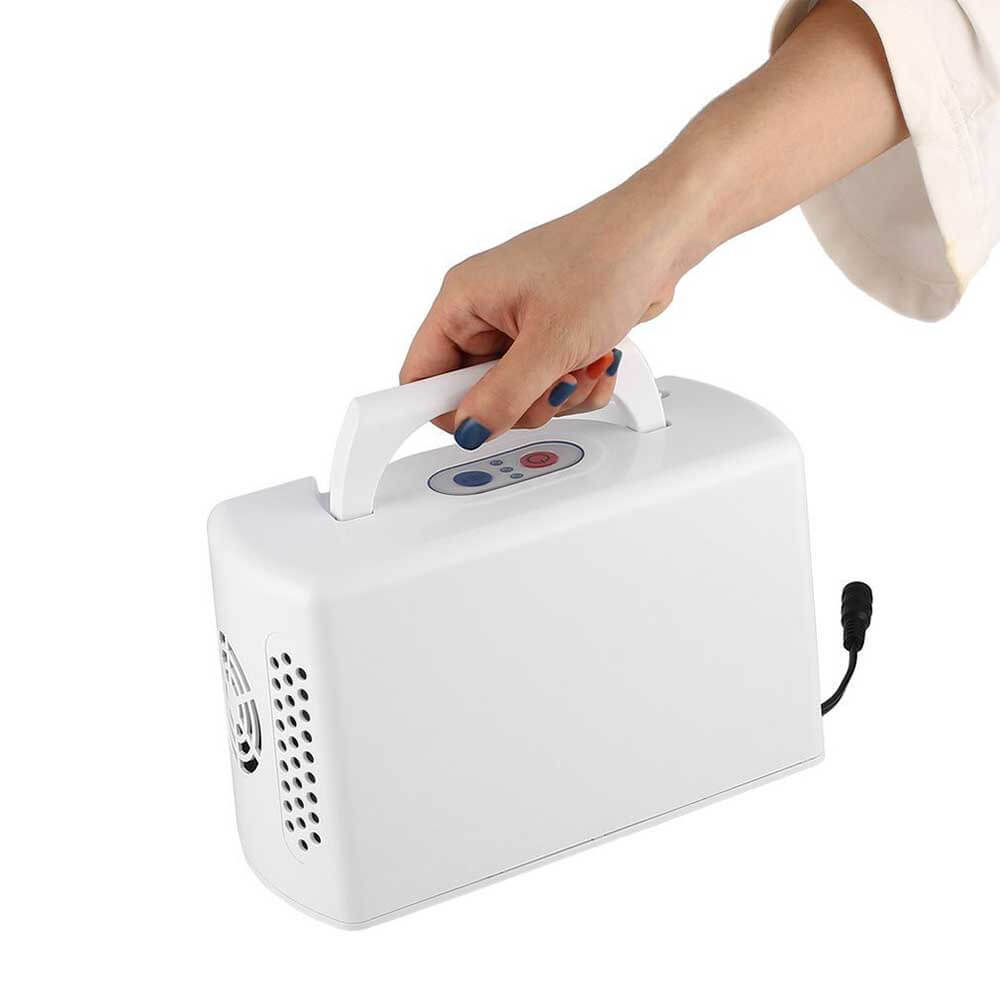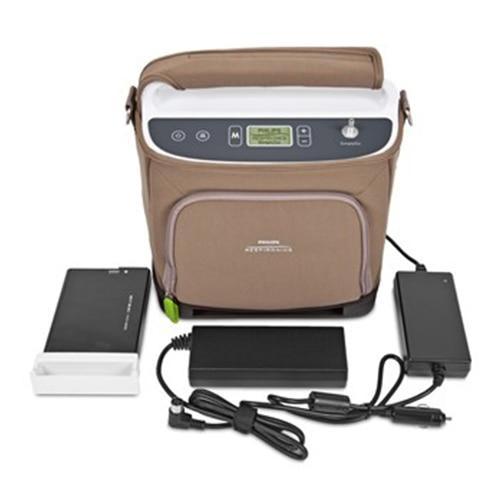The Best Guide To Portable Oxygen Concentrators
Wiki Article
Portable Oxygen Concentrators - An Overview
Table of ContentsLittle Known Questions About Portable Oxygen Concentrators.Some Ideas on Portable Oxygen Concentrators You Need To KnowGetting My Portable Oxygen Concentrators To WorkPortable Oxygen Concentrators Things To Know Before You Buy
Fixed oxygen concentrators were once the criterion, but these storage tanks might consider 50 pounds and were really troublesome (Portable Oxygen Concentrators). Currently, portable oxygen concentrators finish the job, and they can match a bag or purse! The only thing you ought to keep in mind is that portable concentrators have more minimal oxygen distribution capabilitiesThere are two major kinds of mobile oxygen concentrators: pulse dose and continual circulation. As the name recommends, pulse dosage concentrators provide oxygen periodically, only triggering when you breathe in. This sort of device is typically advised for COPD clients with limited oxygen demands, as the amount of O2 that a pulse dose concentrator can provide is fairly reduced.
This tool can deliver up to 3,000 m, L of oxygen every minute, while pulse dosage gadgets have a tendency to top out at 1250 m, L. Constant flow tools are the go-to for the majority of COPD people, as they're ideal for people that require 2 to five liters of oxygen a min.
Currently that you have this overview to the various kinds of mobile oxygen devices, choose the most effective tool with the assistance of your physician. You can explore our blogs to learn even more concerning the types of mobile oxygen offered and our other items, like tubes and cannulas. Or you can call us straight with any type of certain concerns you could have.
The Ultimate Guide To Portable Oxygen Concentrators
We understand Americans utilize residential variations in home care circumstances. We asked yourself how well these portable oxygen concentrators would certainly operate in hospitals. POC concentrators enhance the percentage of oxygen in ambient air people inhale, whenever they need a boost. Private-use ones are small sufficient to lug around, and may help prevent the demand to visit busy facilities and hospitals.When it pertains to mobile oxygen treatment, there are two primary choices for distribution. These are mobile oxygen cyndrical tubes which consist of compressed oxygen gas, or oxygen concentrators, which utilize a battery powered system to compress and filter air, in order to create a consistent supply of focused oxygen. In this blog post, AMS Compound Cylinders Technical Supervisor, Tony Morrin, compares the 2, taking a look at the benefits and drawbacks of each oxygen shipment system for NHS medical oxygen customers in regards to client freedom.

Mobile Oxygen Concentrator Oxygen pureness is constantly greater when provided from cyndrical tubes it never drops below 99. 6%, despite the flow rate called for. In battery-powered concentrators, purity is affected by circulation price, and might be 90% or much less, depending on the equipment. Whilst oxygen concentrators can be beneficial for people that require a lower flow of oxygen, cylinders supply greater focus that can be more ideal for patients with high circulation needs.
Portable Oxygen Concentrators Things To Know Before You Buy
Both systems need the client to carry about equipment. For cyndrical tubes, this will include carrying a bag (and sometimes a trolley) and for mobile oxygen concentrators this will consist of the bag, trolley and power battery charger. Weight sensible, portable oxygen concentrators can my sources be equivalent in weight, or occasionally, lighter than conventional aluminium cyndrical tube systems.
They will need to enhance considerably if they are to offer the very same level of efficiency as comparable composite cyndrical tubes. Oxygen always carries a safety and security risk. On one hand, should cyndrical tubes spring a leak, they can produce an oxygen abundant atmosphere that can bring about a rise in fire risk.

The difference is that there are substantial in advance expenses to purchasing a portable oxygen concentrator, however lower running costs utilizing cylinders makes it possible for the purchaser to spread the expense over a prolonged duration of time. One minor disadvantage of a mobile oxygen concentrator is the noise mobile systems make a significant quantity of noise throughout procedure, which many individuals discover disruptive.
The Buzz on Portable Oxygen Concentrators

Our top notch carbon composite cyndrical tubes offer high pressure (300 Bar), low weight, and NLL (Non-Limited Life) performance, and are approved for use worldwide. Further info about AMS Composite Cylinders Ltd can be discovered at .
Oxygen concentrators are created with user wheelchair in mind. Whether it's a desktop variation for home usage or a smaller, light-weight design for on-the-go, these devices permit individuals to move openly without being tethered to a stationary device. Specifically for the ones specifically designed for transportability, clients can lug them around, helping with travel and everyday tasks easily.
Among the significant conveniences of making use of an oxygen concentrator is the elimination of the constant need to re-fill oxygen storage tanks. This not just decreases the logistical obstacles and persistent costs related to refills but additionally makes sure that the user has an extra predictable and constant source of oxygen. Oxygen concentrators are made to fit flawlessly into the home environment.
Report this wiki page